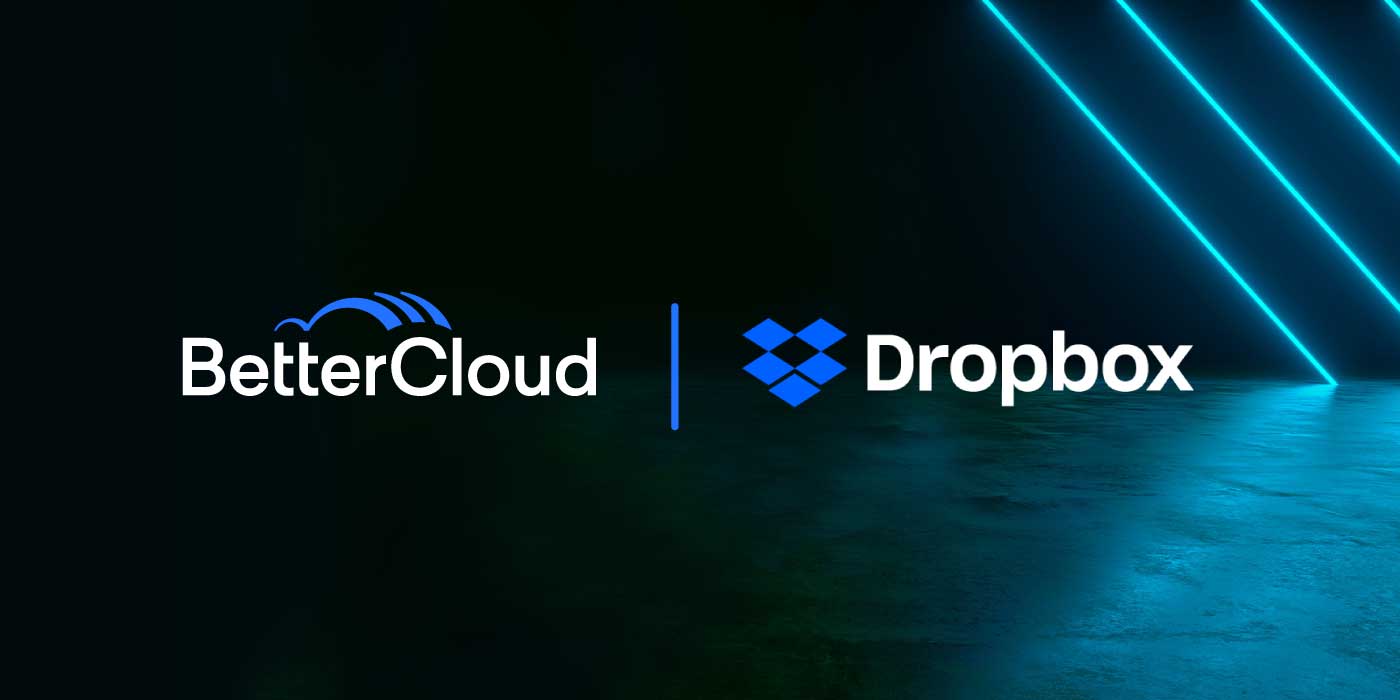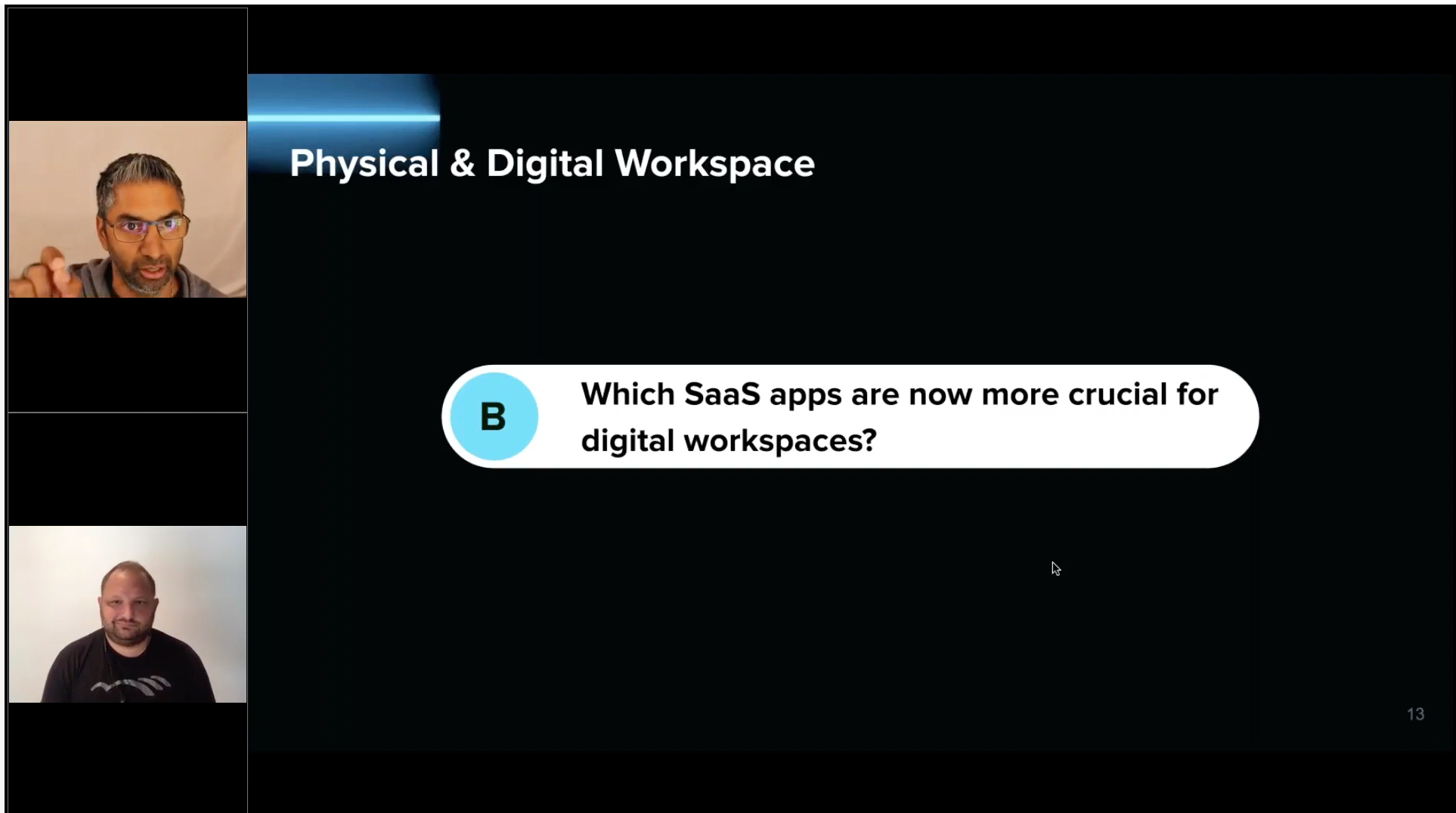How IT will shape the future of workplaces
July 31, 2020
5 minute read

At the beginning of what would turn out to be a global pandemic, the Canadian government tweeted that we’ve all been sent home during a crisis and are trying to work. Even companies that previously hated the idea of WFH had no choice but to embrace this new reality. And much to the surprise of several experts, remote work is, well, working out.
PWC recently found that 49% of executives across all industries are now open to making their remote work policies permanent. But that doesn’t change the fact that working from home is really hard. And leaders all over the world have been trying desperately to answer one question:
How do you help people stay effective while working under these really unusual conditions?
To answer this question and many more, our former CEO David Politis was joined by Dropbox CTO Bharat Mediratta. During their 45-minute chat, they solicited questions from attendees that explored IT’s role in shaping the future of our increasingly digital workplaces. Missed the live event? Here’s a recap of some of the spicier questions they discussed.
How IT can respond to demand for best-in-breed apps
A 2008 article in the Harvard Business Review shared the story of an IT executive who had just made the decision to centralize. “[This] story is prototypical,” the article continued. “The decision to centralize was spurred by ‘no sharing of best practices, no centralized view of spend, patchy commercial relationships with vendors, and a high rate of failed projects.’”
A lot has changed in the twelve years since that article was published.
“We have over 150 SaaS applications across our organization,” BetterCloud CEO David Politis said. “Best-in-breed is here to stay, and I just don’t see any way that people go back to using a suite.”
Politis and Mediratta agreed that IT’s response to the growing demand for best-in-breed apps should be twofold. First, IT needs to create a more flexible governance policy that supports best-in-breed apps. More importantly, IT needs to spend more time with users—and in some cases, get out of their way.
“Most people in your organization aren’t trying to do anything wrong,” Dropbox CTO Bharat Mediratta added. “But they need to move as fast as the business—and if IT’s a blocker, your users are forced to go behind your backs.”
So how should IT respond? Spoiler: The answer isn’t to lash out at anyone who might consider going behind your back to get what they need. Here are a few practical tips to consider:
- Acknowledge that the concept of shadow IT is going away. “We’re past the point where IT locks everything down,” Politis said. “People need to know where to get the things they need to do their jobs.”
- Create policies that empower employees to approach IT. Mediratta explained that this doesn’t mean that IT won’t have the authority to tell users that they can’t use a particular app, but that it’s equally important to explain why.
- Build a “menu” of SaaS options available to your employees. Mediratta suggested creating a shareable list of SaaS applications that your employees can choose from. “It’s really hard to migrate a team off of a platform after they’ve used it for a while,” he continued. “So if we don’t already have something that works for you, let’s talk about it.”
The most crucial SaaS apps for digital workspaces
We’re working under unique circumstances, to say the least. And because of that, the demand for SaaS apps that replicate human connections is at an all-time high. This probably isn’t a huge surprise. It’s also something that Politis and Mediratta were well aware of while reflecting on their own work habits—and the very virtual nature of their webinar conversation.

The most obvious way to maintain a human connection for most people? High (enough) quality audio and video applications.
“Zoom was previously our 10th most popular integration at BetterCloud,” says Politis. “Now it’s our 2nd most popular integration.”
Here at BetterCloud, Politis estimates that the number of meetings that take place over Zoom has tripled since we started working from home. But aside from the low-hanging fruit of video conferencing apps, which other human work experiences can (and should) we replicate? For Mediratta, the answer is whiteboarding.
“In any physical workplace, you have whiteboards everywhere,” he continued. “And my practice in meetings is to draw my thoughts out on a whiteboard. So I’ve been leaning on Miro, which is this really great collaborative digital whiteboard.”
A recent study found that there are over 15,000 SaaS companies just in the United States. But as we transition into a more digital work environment, IT needs to be able to support SaaS applications that replicate the workplace experience. And based on what we’ve learned over the last few months, IT also needs to be prepared for the increased demand around applications that might seem unusual at first glance. After all, could anyone have predicted a digital whiteboard would be so powerful?
Will anything replace SaaS in the (near) future?
We’ve just started to scratch the surface with SaaS, so this is a tricky question. It gets even harder to answer when you think about the types of organizations that are finally embracing SaaS.
“Take a bank for example,” Politis said. “When they make a decision, that decision is going to last for at least 10 years. Now that SaaS is the mainstream, I think we’re so far away from something coming along and replacing it.”
That makes perfect sense, but admittedly it doesn’t answer the question. And even though SaaS has just become mainstream, Mediratta acknowledged that the idea of intelligence-as-a-service has his attention.
“Imagine that you’re faced with a problem and can download the data to get an answer quickly,” Mediratta continued. “You’d complete the task or challenge without having to become a specialist at that thing.”
There are a lot of fun examples of how this might manifest itself. Imagine being able to fly a helicopter without flight lessons. Or being able to balance a quarterly budget sheet, even though you’re terrible at math. Anyone who hasn’t embraced our robot overlords might not be thrilled about the idea, and it probably isn’t a great development for humankind as a species.
However, an intelligence-as-a-service product is a long way away. But that doesn’t mean it’s not interesting to think about all the possibilities—even if intelligence-as-a-service doesn’t replace SaaS completely.
IT’s evolving seat at the proverbial table
Nir Eyal once quipped that everyone hates IT because it’s where good ideas go to die. He wrote, “We follow their onerous documentation requirements and patiently wait in line through endless backlogs, yet somehow IT still can’t seem to get their work done.”
Politis and Mediratta acknowledged this sentiment towards IT—but they also concluded that it doesn’t fly anymore.
Several CIOs that have spoken with Politis recently said that if IT wants a seat at the proverbial table, its leaders need to evolve their skill sets. “They’re front and center now,” he continues. “And it boils down to, ‘How is our business going to work in this digital world?’”
In order to support an increasingly remote workforce, IT needs to make two fairly drastic changes to its approach:
- Be a proactive partner to all teams across the organization. IT can’t sit around and wait for tickets anymore. To support the future of workplaces, IT is responsible for partnering closely with all leaders at the company to determine the best way to operate.
- Form strong opinions about what to build and what to purchase. Dropbox is constantly consuming and building IT. They’re able to do this because IT is willing to speak up about which technologies they can build—and more importantly, which ones they shouldn’t.
We only had enough time to cover portions of Politis and Mediratta’s discussion, which included an exciting announcement about a new add-on feature called Advanced Team & Content Controls. Learn more about it here.






